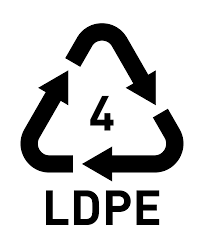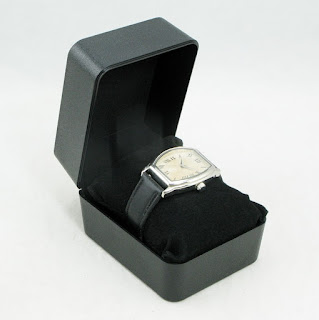-- A small cosmetic bottle cap is so complicated to design
Cosmetic packaging produces a rich feeling for consumers, highlights the visual impact, and guarantees the function of the product. Cosmetic packaging can be combined with text, graphics, colors, shapes and a variety of personalized elements to present a variety of styles to meet the modern people's love for beauty and personalized pursuit, simplicity, freshness and elegance. Cosmetic packaging carries multiple meanings in today's packaging market. It can be seen that cosmetic packaging plays an important role in the display and sales process. Diversification, personalization, and refinement are the main development trends of cosmetic packaging in the future.
Fig.1 75ml Moisturizing Gel Cap Design Artwork
Basic appearance requirements of cosmetic packaging:
1. Plastic parts. They must be consistent with the sealed samples. No burrs or sharp edges are allowed. Those defects may cause human injury or affect the functions, or overall appearance.
2. Material requirements. Consistent with the sealed sample, no material replacement is allowed.
3. Flow marks (welding marks). Within one arm's distance from the eyes, not visually obvious.
4. Gap. In comparison with the samples, the gap between the cap and the bottle should not exceed 1mm.
5. Breakout. The breakout should be within the limits, and there should be no obvious scratching feeling when touched by hand.
6. Damage: The container is broken (damaged), or cannot be filled with content inside, compromised function and overall appearance. There should be no depressions, bruises, strains, scrapes, scratches, minor cracks, etc., within one arm's distance from the eyes, it should not be obvious to the eye, it should not affect the product logo, and it should be within the limits.
7. Hygiene: The contact surface is contaminated with foreign substances, impurities, hair, oil, stains, dust and other pollutants (mildew, blood stains, insect pests, etc.).
Graphic printing requirements for cosmetic packaging:
1. Hot Stamping/printing adhesion: Use 3M-810 tape for 1 minute, and then tear it off at a 45°~90° angle quickly. There should be no obvious fall-off or bottom exposure. The font should be clearly visible.
2. Electroplating/spraying adhesion: Use a utility knife to draw 4 to 6 squares with a length of about 0.2 cm on the electroplating/spraying area (scratch the plating/spraying coating), use 3M-810 tape After being stuck to the grid for 1 minute, it is torn off quickly at an angle of 45° to 90°, and it must not fall off.
3. Color difference: The color should conform to the standard sample, and should be uniform, and should not exceed the range of color limit.
4. Surface treatment: electroplating, spraying dotted or linear exposed bottom, pitting, etc., should be within limits.
5. Decoration: The requirements are clear, please note that the content of the manuscript must not be wrong, do not conform to the requirements, and there should be no ghosting of printed text or patterns, uneven edges or jagged edges, missing dots, color dots, etc., which must not affect the overall product appearance and The pattern should be within the limits (color points should not appear on the logo and within 0.5cm near it).
Technical Specifications of the Plastic Cap
Directional deviation: should be <1.5mm. The maximum external dimensions of the 75ML bottle cap products are 23.90±0.25 mm x 26.00±0.20 mm. The average thickness of the plastic parts is 1.65mm. The material of the plastic parts is PP, the shrinkage is 1.015, and the unit weight of the plastic parts is 3.80 grams.
The technical requirements of plastic parts are that there should be no defects such as burrs, flow lines, pores, warpage, silver lines, cold materials, spray lines, air bubbles and so on. No mold release agent should be used in the molding of plastic parts. The outer cover should be straight, smooth, free from breakage, cracks, and burrs. The color of the outer cover should be uniform. The threaded structure of the outer cover should be intact. The fit of the cap and the bottle should be tight, without slipping or loosening.
Plastic Injection Mold Design
The plastic part is a round bottle cap type plastic part. There is a sealing column with a diameter of 2.15 in the inner center and a taper of 10 on the head. There is a circle of bones near the column to cooperate with the bottle. The bone position plays a strengthening role. There are many shallow grooves evenly distributed on the edge of the cover, which play a role in preventing rotation when the thread is removed. The plastic part has 4.5 internal threads, and the tooth shape is a non-isosceles triangle, see detail D in Figure 1. After analysis, this thread must be fully automatic rotary thread removal, not strong. The production volume of cosmetic packaging materials is huge, so these cosmetic bottle cap molds are multi-cavity molds, generally from 4 to 124 cavities. The number of specific cavities depends on the structure, accuracy, mold structure, presence or absence of the slider core-pulling mechanism, the presence and absence of multiple sub-types and forced demoulding, and the presence or absence of threading mechanisms. It is also related to the production capacity of the injection molding machine, whether it is hot runner molding, or whether it is fully automatic production. The 75ML moisturizing exposed cover mold adopts a mold cavity arrangement of 1 out of 8. The ranking method is 4 per row, and two rows are arranged in a straight line. The way of arranging the mold mainly needs to consider the design of the pouring system and the design of the unthreading mechanism.

Fig.2 Upper part diagram of the 75ML bottle cap mold
Due to the special structure of multi-cavity molds for cosmetic packaging materials, non-standard mold embryos are often required. When designing the mold, try to complete the mold function by adding templates on the basis of the standard mold base as much as possible. The non-standard mold embryo is 2330, and the moving mold adds two layers of templates to design and place the gear mechanism. The gate of the plastic part is a horn gate, which is a variation of the latent gate. The gate position is at the bottom of the edge of the bottle cap. The advantage of the horn gate is that the gate trace is small and does not affect the appearance of the plastic part. It can be automatically cut off when it is ejected, and the automatic separation of the plastic part and the runner condensate is realized, which is convenient for automatic injection molding.
Fig.3 Lower part diagram of the multi-cavity cap mold
For multi-cavity molds of cosmetic packaging materials, due to the large production volume, there are often requirements for injection molding cycles. In the case of a thread-releasing mechanism, the injection cycle of 10 ~ 15S is a common requirement. If the hot runner system is used for injection molding, the injection cycle may be shortened. The water transport circuits of the front and rear molds must be designed sufficiently, and the water transport must surround the circumference of each cavity insert to meet reasonable requirements. Another key link of the multi-cavity mold is the machining accuracy. The concentricity of the holes of each template must be within 0.015 in order to maintain the concentricity of the plastic parts. When the concentricity is out of tolerance, the front and rear molds are eccentric, and the wall thickness of the plastic parts will be uneven. After assembly, the bottle cap and the bottle body will have a large gap, and the phenomenon of scraping will occur, which will seriously affect the quality of the product. The dimensional tolerance of the insert in each hole is also within 0.015, making it interchangeable. The processing of the thread core of the movable mold should be noted that the design of the fixture to grind the screw teeth to the size can have high surface roughness requirements, to avoid manual polishing to deform the thread and cause the demoulding rotation to be uneven.

Fig.4 Cosmetic packaging mold design artwork
The mold adopts hydraulic motor thread removal mechanism to realize automatic thread removal. The hydraulic motor model is BM-R100. The hydraulic motor drives gear C (key 26) through the large gear 21 on it, and then drives the adjacent four gears A (key 13). Gear A then drives two gears B through the gear B drives another 4 gears A. The entire design is compact and the transmission efficiency is high. After the parting surface is opened, the plastic part is separated from the fixed mold, and the hydraulic motor drives the gear mechanism to rotate, which finally drives the rotating core 12 to rotate. At the same time, the push plate is springed up by 17mm under the action of the spring 8, limited by the plug screw 7 . The anti-rotation rings A and B on the push plate push the plastic parts out of the movable mold core.
Fig.5 Plastic injection molding design
To facilitate the processing of horn runners, the rotation stop ring is divided into A and B semicircles. A dynamic inner mold 34 and a dynamic inner mold insert 35 are designed at the bone position inside the plastic part, and a thimble is added inside to play a good exhaust effect, and a cooling circuit is designed. Rotor core material adopts DC53, heat treatment HRC56-58, rotor core and movable inner mold 34 only contact at both ends, in order to seal at the top, the bottom is contacted by self-lubricating bearings, and the middle is all evacuation section, which can avoid burning in motion dead. All moving parts and their mounting holes must guarantee machining accuracy.
The merit of the horn gate is that the gate trace is small and does not affect the appearance of the plastic part. It can be automatically cut off when it is ejected, and the automatic separation of the plastic part and the flow channel condensate is realized, which is convenient for automatic injection molding. Attention should be paid to the processing of the thread core of the movable mold. Designing the fixture to grind the screw teeth to the size can have high surface roughness requirements, avoiding manual polishing to make the thread.



















